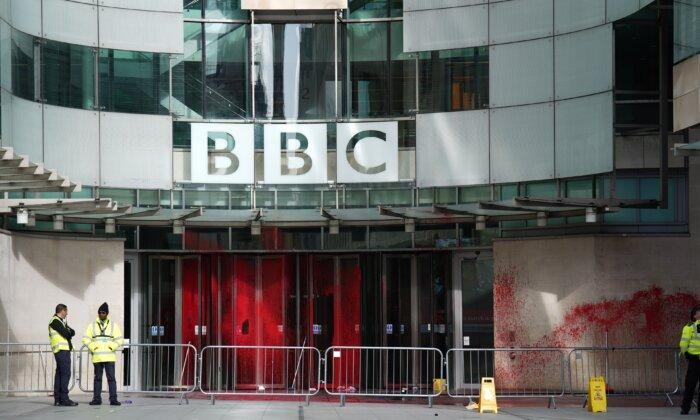Police Scotland has been urged to undertake an urgent review after a watchdog found not all of its officers have vetting records.
An investigation by His Majesty’s Inspectorate of Constabulary in Scotland (HMICS) also revealed the force does not re-vet employees who hold only recruitment vetting.
The vetting failures are putting sweeping officers at risk of being corrupted or blackmailed by terrorists and criminals, the findings found.
Police Scotland has been advised to undertake immediate action to ensure all workers have been subject to at least recruitment vetting.
HMICS is also calling for those who hold only recruitment vetting to be re-vetted every 10 years.
Other key findings in the report, published on Tuesday, found several other vetting gaps in the Police Scotland system.
They include no checks or reviews of vetting clearances held by officers and staff employed by legacy forces on the creation of Police Scotland in April 2013.
The force also has no easily identifiable requirement for officers or staff to notify the organisation of any off-duty criminal conviction, offence, or charge.
HMICS also found it does not have a process for reviewing vetting clearance following misconduct.
Police Scandals
Earlier this year, Police Scotland announced all 22,000 staff would be checked against national databases amid a pledge to step up vetting following the case of David Carrick.In February, the former Metropolitan Police officer was handed 36 life sentences after admitting dozens of rape and sex offences while serving on the London force.
Mr. Carrick’s conviction followed that of fellow Met officer Wayne Couzens, sentenced to a whole-life order for the murder of Sarah Everard.
Ms. Everard was kidnapped, raped, and murdered after Mr. Couzens staged a fake arrest.
That process is still under way, however the HMICS report highlighted there is no legal requirement for the force to vet officers and staff.
It also noted that training and mentoring within the Force Vetting Unit (FVU) is of a “high standard.”
The watchdog’s review of vetting policy and procedures within Police Scotland is part of a wider thematic inspection of organisational culture which HMICS is presently undertaking.
Owing to the importance of vetting and its current high profile, it was agreed a separate review should be expedited to consider the quality of vetting.
HM Chief Inspector of Constabulary in Scotland Craig Naylor has now urged the Scottish Government to legislate to ensure there is a minimum level of vetting for all officers and staff within Police Scotland, and to enable the chief constable to dismiss anyone who cannot maintain suitable vetting.

Terror Risk
In a statement released alongside his report, Mr. Naylor said: “Vetting should not be viewed in isolation or as a standalone process and must be part of an overall system to identify and manage potential risks posed by officers and staff.“By its very nature, vetting is a snapshot in time and no regime, however rigorous, can ever guarantee a person will not go on to become a risk. Where these risks cannot be managed, it should be possible to remove that individual from their role or, if necessary, from the service.”
Mr. Naylor said it was important to address the issues owing to the damage recent policing scandals have caused to public confidence.
“Significant steps have been undertaken following recent high profile cases in England to ensure that officers and staff have been checked and any risks identified, highlighted and managed appropriately,” he said.
“Losing intelligence to terrorists or serious organised criminals is a threat which Police Scotland rightly takes seriously but exposing a vulnerable person to an individual who wishes to harm them is, to me, abhorrent and steps need to be taken to provide assurance that the protection of the vulnerable is prioritised.”
The watchdog said there is “no clear process” for anyone working within Police Scotland to advise the service of a significant change of personal circumstances, nor of a conviction.
He added: “There may be situations where they are unable to maintain their vetting clearance and, as a consequence, it should be withdrawn or suspended.
“Our view is vetting clearance should be reviewed following misconduct proceedings to ensure any new risk is considered” said Mr. Naylor.







